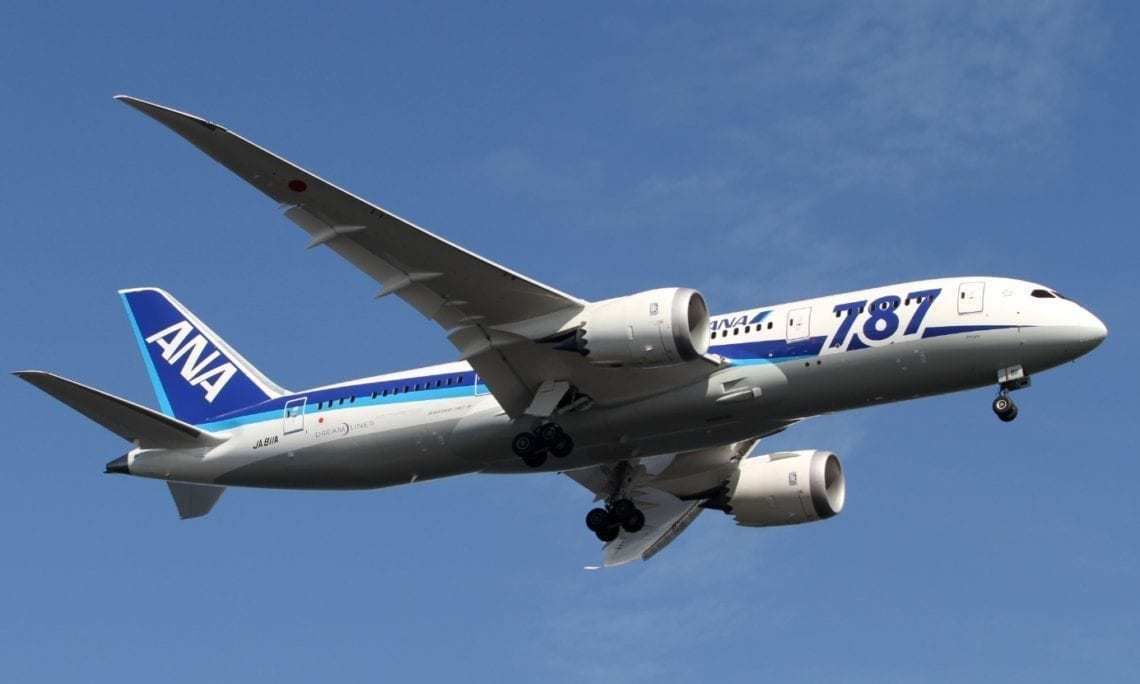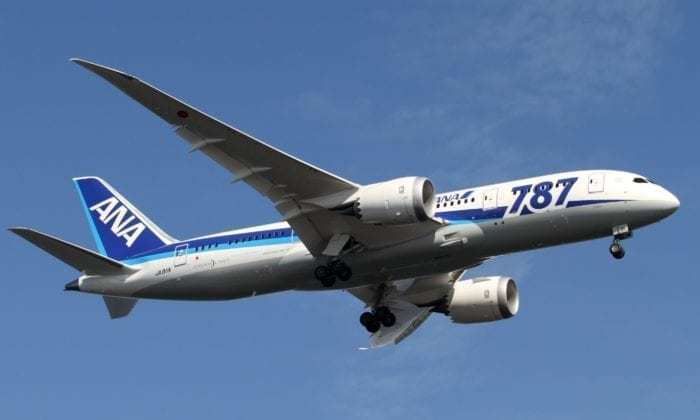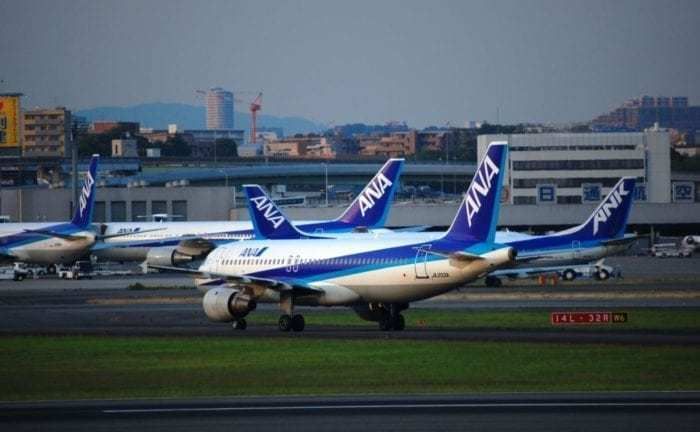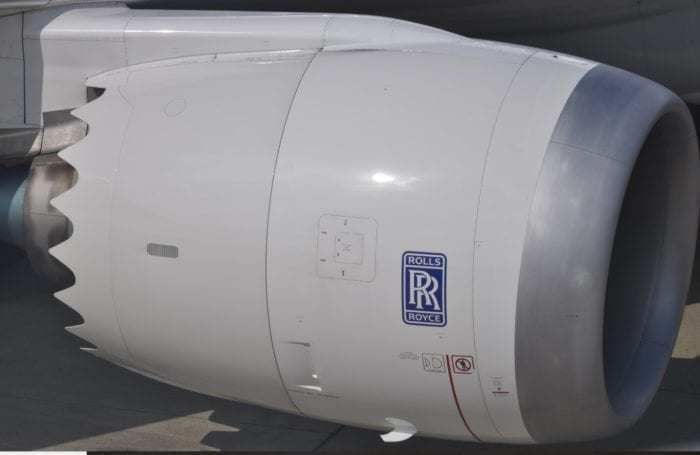On January 17, 2019, an ANA Boeing 787 Dreamliner suffered a simultaneous dual engine failure on landing at Osaka Itami (ITM).
ANA Flight NH-985 had 109 passengers and 9 crew members on board. The flight from Tokyo Haneda (HND) was operated on ANA’s Boeing 787-8 registration number JA825A.
As usual, the pilots deployed the thrust reversers after touchdown to slow down the aircraft. Shortly thereafter they noticed that both Rolls-Royce Trent 1000 engines had shut down. At this point the crew let the aircraft roll down the runway. It came to a complete stop after 8,030 feet.
The pilots consulted their checklists and talked to maintenance personnel, but they were not able to restart the engines. Consequently, the runway was closed until the aircraft was towed off about 40 minutes later. All passengers and crew members were able to disembark the aircraft without further incident.
What caused the engines to fail?
At this time, we really do not know what caused the engines to fail. ANA dispatched a maintenance team from Tokyo to investigate the incident. This team, however, was not able to find any faults with the engines. There are speculations that a computer or software issue might have caused the dual engine shutdown.
Furthermore, Boeing just recently issued a bulletin addressing a problem with the Thrust Control Malfunction Accommodation (TCMA) system. The role of the TCMA is to basically shut down the engine if an overthrust is detected by the system. There is a possibility that the system will activate if the aircraft has not transitioned to ground mode and full reverse is selected too quickly after landing.
Nonetheless, we do not know if this is indeed what caused the shutdown. The incident is currently still under investigation.
Dual engine failures
Dual engine failures on commercial aircraft are an extremely rare occurrence. As Simple Flying reported, last December a Brussels Airlines Airbus A330 experienced a dual engine failure during flight. These engine failures, however, did not occur simultaneously. The first engine failed at high altitude, while the second engine failed on approach. The crew was able to restart both engines, and the aircraft performed a normal landing at its destination. It is believed that fuel contamination was the reason for these failures.
Problems with Trent 1000 Engines
This is not the first time that ANA has experienced problems with its Trent 1000 engines.
Last July, ANA had to cancel over 300 Dreamliner flights due to inspections mandated by Japan’s Civil Aviation Bureau. At that time Rolls-Royce stated that premature aging of the compressor blades of the Package C engines could lead to engine failures during flight.
In 2016, ANA experienced three engine failures due to corrosion and cracking of turbine blades. As a result, the airline announced that it was going to overhaul all its Trent 1000 engines.
It will be interesting to see what the investigations reveal regarding the latest incident. Simple Flying will provide an update as soon as it becomes available.
What do you think might have caused the simultaneous dual engine shutdown?




